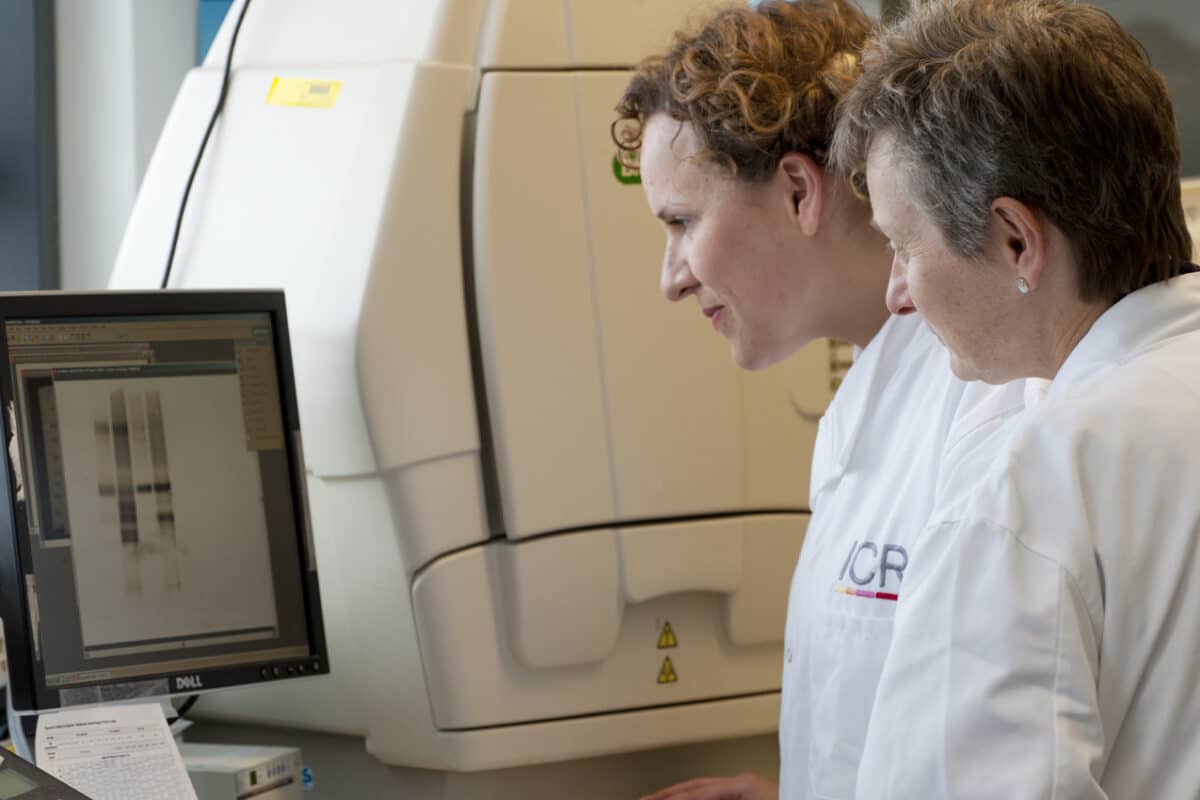
Discover Dr Ewa Aldowicz
Dr Ewa is one of the researchers that work in Dr Janet Shipley’s team. The Tom Bowdidge Youth Cancer Foundation has been funding Dr Ewa’s work for the last 3 years.
Dr Ewa recently took time out of her busy day to tell us a bit more about herself and the work she does.
How does your work contribute to the ICR’s mission to make discoveries that defeat cancer?
Paediatric sarcomas are relatively rare and because of that the research is more challenging than research in adult cancers that are more common. We make a huge effort in our team to understand the biology of these tumours and to develop better treatments. My work covers different aspects of cancer research: developing models for drug testing, exploring new therapeutic approaches and understanding how new therapies work at the molecular level in rhabdomyosarcomas and desmoplastic small round cell tumour.
Another way I contribute to the mission of our Institute is by teaching the next generation of researchers. I help people in my team with their projects and teach them new techniques. Also, I was the associated supervisor of a PhD student who received his degree at the end of last year.
What big projects are you working on?
The development of new sarcoma models is one of my major projects. The models allow us to understand the disease and test new drugs outside the patient’s body. The most used models in cancer research have been cell cultures where cancer cells are grown for many years attached to plastic dishes. Although a lot of discoveries have been made thanks to them, we now know that they poorly represent the tumours that grow inside the human body. Thus, we put a lot of effort to improve the models both in vivo and in vitro. For this, I develop in vivo models called patient-derived xenografts (PDX) where I implant cancer tissues from patients in mice to develop tumours. Such tumours were shown to maintain histological and genetic characteristics of patients’ tumours and enable more complex studies, not possible in culture dishes. I have also improved our in vitro models by growing cancer cells as small three-dimensional (3D) spheroids as opposed to old-fashion, two-dimensional (2D) cell cultures, and developing techniques for drug testing in 3D. Cell culture in 3D is technically more complex than approaches for 2D cultures.
My other project involves testing a new drug combination in alveolar rhabdomyosarcomas that could be more effective than traditional chemotherapy. I am now trying to understand how the therapy works at the molecular level which will identify molecular markers to know which patients would benefit from it the most (tailored therapy) as well as define molecular markers to know how individual patients are responding to treatment.
What are the next steps in your research?
My research has the ultimate aim of identifying the best possible treatments for rhabdomyosarcoma and DSRCT patients. Everything I do is working towards making this a reality. A key research priority going forward is to continue making cancer models, especially of DSRCT. There is only one commercial cell line of DSRCT available and it is crucial to have more in order to understand this rare disease and develop new treatments.
For rhabdomyosarcoma, the plan is to conclude the current study of the new drug combinations within 1 – 2 years. I hope that with the help of our collaborator at the clinical side, this treatment becomes part of the clinical study and directly benefits the patients.
Here I would like to thank you for the support of The Tom Bowdidge Youth Cancer Foundation. They make all this research possible.
Talk us through your typical day
Currently, due to the pandemic, we work in shifts to respect social distancing. I work in the lab every morning doing experiments. In the afternoon I work from home covering all aspects of “office work”: I respond to emails, read papers, analyse results, plan experiments, write reports, prepare presentations, attend online meetings, and talk to my colleagues whenever they need my help. I feel lucky because my days are never the same and I am really motivated to tackle the technical challenges and understand the biology that I believe will ultimately benefit patients.
Can you explain your work in a tweet/couple of lines?
My research is focused on finding more efficient and less toxic treatments for children and adolescents with sarcomas
What are you most proud of?
I have always been an extremely shy person in a way that was stopping me from doing things and before graduating from University in Poland I had travelled very little. I am very proud that after graduating, I took a huge leap and moved alone to Italy where I did not know anyone, I learnt the language and with hard work, I succeeded in getting my PhD.
What’s your favourite part of your job?
I love analysing data, trying to understand results and, based on that, designing new experiments to push my projects forward. For me, this job is like solving a jigsaw puzzle, sometimes very frustrating but sometimes immensely rewarding.
What do you do to wind down?
I have a big, energetic German Shepherd dog who needs a lot of exercise every day. Our long walks are a great way to relax both the body and mind!



If you would like to help Dr Ewa to continue her life-changing research then please donate whatever you can afford, today.
Thank you.